The Brightest Object in Nature and Facebook at the Polls
What is the brightest object in nature? In this NewsFlash, we discover how an African fruit outshines the competition. Plus, stem cells restore hearing to deaf gerbils, how facebook alters voting behaviour, and why so many supernovae are obscured by clouds of dust...
In this episode
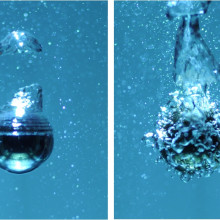
00:24 - Metal at 400 degrees underwater
Metal at 400 degrees underwater
Adding a water-repelling layer to a metal ball means it can sit submerged without boiling explosively, scientists have discovered.
Writing in Nature, Northwestern University researcher Neelesh Patankar and his colleague Ivan Vakarelski, coated 20mm diameter stainless steel balls with a commercially-available material called "Glaco Mirror Coat".
This superhydrophobic layer repels water and is stable to temperatures of over 400°C. Compared with control, untreated balls heated to this temperature and dropped into cold water where they produced a fierce explosive boiling, the superhydrobic balls - in Petankar's own words - "did nothing". In fact, fast-frame video footage of the experiments show that the balls become surrounded with a layer of water vapour.
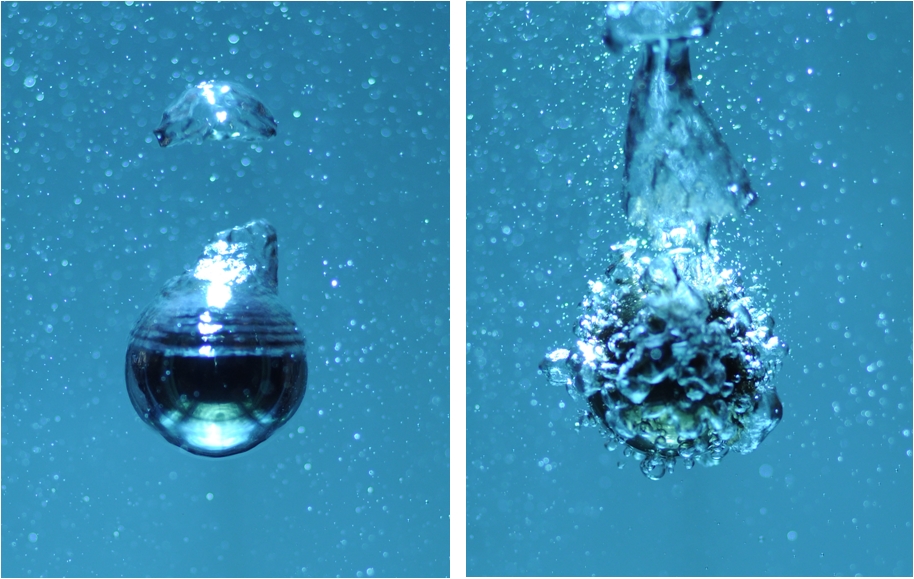 Apart from being a relatively poor heat conductor, this prevents the liquid touching the ball surface, so it cannot boil off.
Apart from being a relatively poor heat conductor, this prevents the liquid touching the ball surface, so it cannot boil off.
The researchers think that the process works because the applied coating consists of nanoscale ridges and grooves. Liquid, they speculate, sits atop the ridges but cannot flow down into the grooves owing to the hydrophobicity of the surface. So water vapour fills the groove instead, keeping the liquid at bay.
Why this is important is that explosive boiling occurring when liquids contact hot surfaces can be problematic in some industries. Being able to prevent this could be a major processing advantage.
01:09 - Stem cells restore hearing
Stem cells restore hearing
A way to produce replacement auditory nerve cells that can restore hearing to deaf animals has been discovered by scientists in the UK.
Working with human embryonic stem cells (hESCs), Marcelo Rivolta and his colleagues at the University of Sheffield exposed the cells to two growth factors called FGF3 and FGF10 which have been linked previously to embryonic ear development.
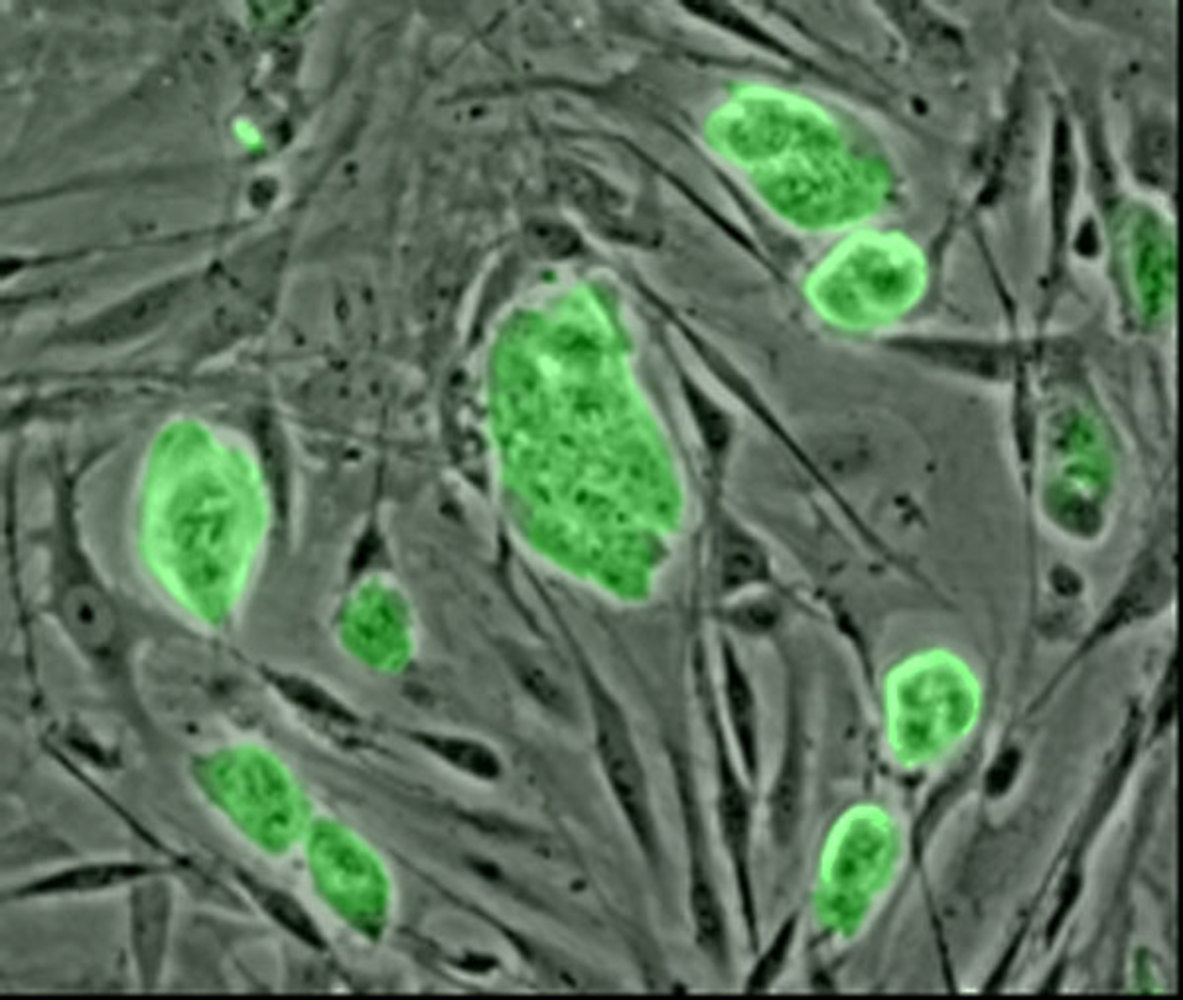 The team showed that adding these factors triggers a proportion of the unspecialised embryonic cells to switch on a discrete set of "marker" genes called PAX2, nestin, SIX1 and GATA3.
The team showed that adding these factors triggers a proportion of the unspecialised embryonic cells to switch on a discrete set of "marker" genes called PAX2, nestin, SIX1 and GATA3.
Cells expressing these markers, they found, go on to produce two separate populations of cells, those resembling the hair cells that convert sound waves into the electrical signals in the inner ear, and a second group of cells destined to become the nerves that carry the signals from the hair cells to the brain.
Injected into the inner ears of gerbils with a form of drug-induced deafness, nerve cells produced this way were able to restore hearing in the animals, in some cases completely.
The researchers found evidence of the new nerve cells forming connections to the hearing-related parts of the animals' brainstems, accounting for the recovery.
In their paper, published this week in Nature, the Sheffield team conclude, "The ability to reinstate auditory neurone functionality paves the way for a future cell-based treatment for auditory neuropathies," which are a significant cause of deafness among adults and children.
"It may also, in combination with a cochlear implant," the team suggest, "offer a therapeutic solution to a wider range of patients that currently remain without viable treatment."
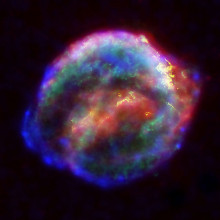
03:43 - Most supernovae hidden by dust
Most supernovae hidden by dust
Ninety per cent of supernova explosions go unseen by the surveys designed to look for them, a 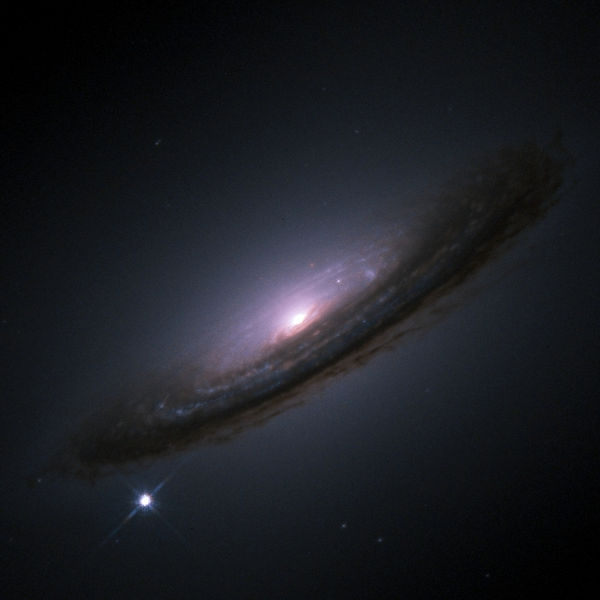 new study has found.
new study has found.
Supernova explosions occur at the ends of the lives of massive stars. When such a star runs out of fuel its core collapses to form a neutron star or black hole and a massive amount of energy is released. The outer layers of the star are blown off into space.
The resulting light from these blasts can typically be more than a billion times brighter than a typical star, yet many seem to go unnoticed. For example, in our own Milky Way galaxy, there's ample evidence that supernovae occur every 20-30 years, yet none have actually been seen since 1604.
One suggestion to account for this discrepancy is that dust - tiny solid fragments of soot produced by stars and that pervades the space around them - when sufficiently dense can form a literal smokescreen that it is impossible to see through, masking the majority of supernovae.
Writing in the Astrophysical Journal this week, a team led by Seppo Mattila of the University of Turka in Finland develop this idea.
They studied a nearby galaxy called Arp 299 using infrared (IR) telescopes. Infrared passes through dusty smokescreens much more easily than visible light, making it a good tool for probing previously-concealed details of galaxies like Arp 299.
What they found was that massive stars tend to cluster more tightly than Sun-like stars within the most densely-populated parts of galaxies, where interstellar dust is also at its thickest. And because it is these stars that gives rise to supernovae, they too cluster strongly in these regions.
As a result, Mattila's team conclude that between 80 and 90% is the supernovae produced in these regions would have been missed by the traditional surveys. This helps to explain a mystery of why supernovae are so rarely seen, but also means we can begin to better understand the effects that these supernovae have on their surroundings.
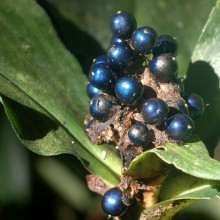
05:57 - The Brightest Thing in Nature
The Brightest Thing in Nature
Beverley Glover
Cambridge University Scientist Beverley Glover has discovered what she says is the brightest thing in nature; and guess what? It isn't Stephen Hawking! She explains the work to Chris Smith...
Beverley - What we found is that the fruit of a plant called Pollia condensata that lives in Africa is the brightest thing in nature. It reflects a higher percentage of the light shining on it than anything else ever recorded, including the famously bright shiny butterflies that you see out there. It's a blue-coloured fruit with speckles of pink, yellow, and green in it. It's iridescent. It changes colour as you look at it from different angles and the colour is really bright and really striking.
Chris - How did you find it?
Beverley - A colleague in the Royal Botanic Gardens at Kew was looking through their collection and she knew that I was interested in plants that use structures to generate interesting colour effects. They're not just your usual pigmentation, but more unusual or striking colours and she saw this very bright blue fruits that had been collected over 50 years ago. Even though they'd been pressed and dried, they were still as bright as when they'd been collected, so she passed them along to us to do the analysis.
Chris - And how do you know that they are the brightest thing in nature?
Beverley - Well, they may not be. They're the brightest thing measured so far in nature, which would be a fairer way to put it. So the percentage of light that they reflect back is higher than that reported for anything else that anybody has ever measured.
Chris - Do we know how they do that?
Beverley - Yes, we do. It's a very clever mechanism and interestingly, it's an example of convergent evolution because a lot of animals use a similar mechanism. If you think of bright blue butterflies or beetles then they're highly reflective because they have layers of secreted chitin on top of their wings and the layers are spaced at just the right frequency to reflect back particular wavelengths of light. The cleverness in the system is that the more layers you have, the more light you reflect back, so you get a higher percentage of reflectivity. What our fruit is doing is that every individual cell on the outer layer of the fruit has layers within its cell wall. So these are plant cells, they have cellulose cell walls and those walls are made up of layers of cellulose, and there are many, many, many layers of cellulose, and so, of course, they're able to reflect a very high amount of light back.
Chris - Why do they do this?
Beverley - We haven't done any experiments out there in the field to check this, but their distribution suggest that they're dispersed by birds. They don't pop open of their own accord so they probably need to be swallowed or to go through the bird's digestive tract for the seeds to come out. And yet, they don't provide any food reward and so, we think that it's actually a trick that nature has come up with a cunning scheme for attracting birds by being just really bright and shiny, even though there's nothing in it for them really.
Chris - Would that be birds that like shiny things, like magpies and bowerbirds that like to decorate their nest with bright things to attract females?
Beverley - That's very likely. It could also be that they just look like really bright blue juicy fruit, but you'd think a bird would learn that quite quickly. So, we think that it's more likely that it's about birds that decorate their nests and that are trying to attract females.
Chris - And given that you've worked out how the fruit does this, could we do anything similar or could we use that knowledge to produce ultra-bright things for us to use?
Beverley - Absolutely. So, it's a very setup because it's doing it with cellulose and cellulose of course is highly biodegradable, but also extremely cheap to grow because plants are basically made out of it. So, if we can figure out how the cellulose is organised in that way, we could potentially grow food colorants which are entirely nontoxic, biodegradable or colours for fabric as well. So, there's lots of potential application there.
Chris - But would they be like the Henry Ford? Would they be any colour you like as long as it's blue?
Beverley - No, not at all. The stacking frequency of the multilayers determines what colour you get. So, the fruit is actually multi-coloured because although most of the cells have their cell walls set to the frequency that generates blue, some are stacked to a slightly wider spacing and they generate yellow, or pink, or red.
Chris - Brilliant! Sorry about the pun. That was Cambridge Scientist Beverley Glover, discussing the bright blue fruit of the Pollia condensata plant. That was work she published this week in the journal PNAS.

09:48 - Metal at 400 degrees underwater
Metal at 400 degrees underwater
Adding a water-repelling layer to a metal ball means it can sit submerged without boiling explosively, scientists have discovered.
Writing in Nature, Northwestern University researcher Neelesh Patankar and his colleague Ivan Vakarelski, coated 20mm diameter stainless steel balls with a commercially-available material called "Glaco Mirror Coat".
This superhydrophobic layer repels water and is stable to temperatures of over 400°C. Compared with control, untreated balls heated to this temperature and dropped into cold water where they produced a fierce explosive boiling, the superhydrobic balls - in Petankar's own words - "did nothing". In fact, fast-frame video footage of the experiments show that the balls become surrounded with a layer of water vapour.
 Apart from being a relatively poor heat conductor, this prevents the liquid touching the ball surface, so it cannot boil off.
Apart from being a relatively poor heat conductor, this prevents the liquid touching the ball surface, so it cannot boil off.
The researchers think that the process works because the applied coating consists of nanoscale ridges and grooves. Liquid, they speculate, sits atop the ridges but cannot flow down into the grooves owing to the hydrophobicity of the surface. So water vapour fills the groove instead, keeping the liquid at bay.
Why this is important is that explosive boiling occurring when liquids contact hot surfaces can be problematic in some industries. Being able to prevent this could be a major processing advantage.
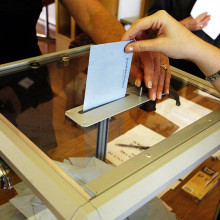
11:25 - How Facebook alters Voting Behaviour
How Facebook alters Voting Behaviour
James Fowler
Facebook. Nearly a billion of us use it, but does it affect how we make important decisions? James Fowler at the University of California San Diego has been looking at the social networking site Facebook and how it can influence voting behaviour...
Chris - You famously showed that if people have overweight friends on Facebook then they're more likely to put on weight themselves, and now you're turning to politics.
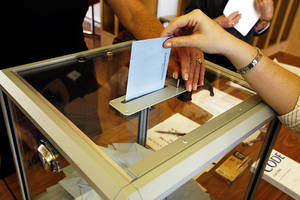 James - Yes we are and this week, we reported the results of an experiment that we conducted on election day in the United States in 2010, where we randomly assigned the 'Get Out the Vote' messages to 61 million people on Facebook. There were 2 different kinds of messages. One with faces of friends and one without, and there was also a control group that received no messages. And the results of the experiment showed that the message directly mobilised 60,000 people who saw the message, but it also mobilised an additional 280,000 people who were friends of the people who saw the message. And we were able to do this because in the United States voting records are public and we were able to match about 6 million of the Facebook users to publically-available records to see whether or not they actually got to the polls.
James - Yes we are and this week, we reported the results of an experiment that we conducted on election day in the United States in 2010, where we randomly assigned the 'Get Out the Vote' messages to 61 million people on Facebook. There were 2 different kinds of messages. One with faces of friends and one without, and there was also a control group that received no messages. And the results of the experiment showed that the message directly mobilised 60,000 people who saw the message, but it also mobilised an additional 280,000 people who were friends of the people who saw the message. And we were able to do this because in the United States voting records are public and we were able to match about 6 million of the Facebook users to publically-available records to see whether or not they actually got to the polls.
Chris - So you could check up on them as well. So just to recap, you had 3 groups of people. A control group who you just looked at and just monitored their behaviour, you've got a group who get a little button which says, "go and vote" and another group that say, "go and vote and by the way, here are some friends of yours who voted."
James - That's correct and the interesting thing about the 2 different kinds of messages we showed people, there was one that had pictures of their friends who had clicked on the button during the day and another one didn't have these same pictures. What we found was that, the one that had the pictures, actually was the one that did all the work. The one without the pictures, the rate of voting for the people who got that message was exactly the same as for the people who saw no message whatsoever. And so, these pictures of your friends are what seemed to be doing most of the heavy lifting in terms of the total effect of the experiment on real world behaviour.
Chris - But do you know James, whether it is just seeing pictures of your friends that makes you attend to that bit of the screen more and for longer so you'll notice the, "go and vote now" message more or is it that the friends have voted and this makes you think, "Wow! I'd better keep up with what my friends are doing"?
James - That's a good question and we would like to figure this out I think in a future experiment. Right now, we just know that the message works, but it's possible that it's just something that draws your eyes to the message because, you know, just like when you see a list of random words, if your name happens to be in that list of random words, you're likely to be able to pick it out very quickly. Seeing faces of friends, that might cause you to attend the message, but one of the things that we were able to show was that, not only was it the case that people who saw faces of their friends voted more, but the friends of the people who received the message voted more. And so, the consequence, there was something that happened on the way from you getting the message to your friend voting that probably had something more to do than just attending to the message, had to do with the process of social influence.
Chris - So, what are the implications then? You put this message up and people see that their friends have reacted to it and you end up with a bigger result through the social networking impact then the primary advertising in the first place. Facebook must be delighted.
James - That's right. Yeah, it was really interesting. To make it just perfectly clear, for every one person whose behaviour was changed directly, there were 4 friends whose behaviour was changed. And the interesting thing is I think that campaigns, they've gotten very smart in the last few years in countries like the United States and in Europe, and they do experiments. They do this message testing on a large scale, but I think that they don't necessarily utilise all these new social network information that we have and what this really shows is that if you were just looking at the people who receive the message, you'd be missing the whole story. The network is really key here.
Chris - Is the fact that voting is something that people should universally do also important because if you had conversely put up an advert saying, "Mrs. Whoever bought a Ferrari" now that's only going to be relevant to a subset of people and a subset of friends, and therefore, it's unlikely to have the same impact as if it said, "go and vote" because that's something that doesn't attract a physical cost and also, is something everyone should do?
James - I think that's exactly right and in particular, I would expect these social effects to be stronger for things that we think of as social behaviours or socially appropriate behaviour. Another thing that we found in the study, just like we have found in other studies, is that there are some people who clicked on the "vote" button in this case, but then we went to check up on them, they didn't actually vote. And I think one of the reasons why is because it's highly socially desirable to be seen as participating in politics. When it comes to buying a Ferrari, you might get some social benefits out of owning a Ferrari, but it's not about people saying, "This is your obligation to own a Ferrari." So, I do think that it may be the case that we wouldn't see the strength of effects for other kinds of things online.
Chris - What's worrying me though is the sorts of numbers that you're producing from this study of people whose voting behaviour was influenced. If you look in the state of Florida, in the Bush/Gore election, that was one with nearly 600 votes only - a tiny number - you're influencing orders of magnitude more people with this study. So, does this mean that potentially, a savvy politician using Facebook could actually totally skew an election result then?
James - I do think that these are going to be effective tools, but everyone is going to know about them. And so, I think that what you'll see is, both sides are trying to use the tools and both sides trying to mobilise their voters. And it's important to remember that although it was a very large number of people - 340,000 people - this is out of 61 million and so, it's a small effect, but because it's spread out over a very, very large number of people in a very, very large network, I do think it's possible that as we learn more about how these processes work that you could do targeting, and you could get those 537 voters in Florida that you would've needed to change the outcome of the election.
Chris - James, we'll have to leave it there, but thank you very much. That's James Fowler from the University of California San Diego, and he published that report this week in the journal Nature.









Comments
Add a comment